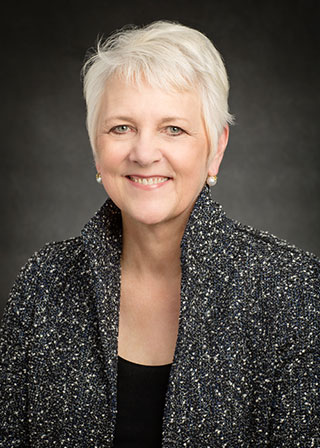Dr. Kirk Delivers McCristal Lecture

In more than 30 years that the devices have been used in the United States, cochlear implant technology has improved significantly. Dr. Karen Kirk, Shahid and Ann Carlson Khan Professor in the College of Applied Health Sciences and head of the Department of Speech and Hearing Science, gave a longitudinal perspective on cochlear implant outcomes research during the Fall College Meeting as the 2014 King James McCristal Scholar. The event took place on August 19 in Huff Hall.
Dr. Kirk was the speech-language pathologist on the very first pediatric cochlear implant team at the House Ear Institute in Los Angeles. It was 1981, and the House/3M cochlear implant consisted of a single electrode implanted in the cochlea that sent impulses to the auditory nerve. Over time, the technology evolved into multichannel systems that feed information to different parts of the cochlea which in turn stimulate the auditory nerve. Dr. Kirk’s own research has focused on the efficacy of cochlear implants, factors that influence the outcomes of implantation, and ways to better assess candidates for implantation. She developed the Lexical Neighborhood Test, an auditory word recognition test that has been used in FDA clinical trials of new implant systems, as well as an audiovisual test of spoken word recognition.
Some of the developments resulting from research focused on cochlear implant performance include deeper knowledge about how age, cognitive abilities, communication method, and additional disabilities impact both candidacy for implantation and outcomes. Scientists came to understand the relationship between earlier implantation to prevent delays in language acquisition, and now some children as young as six months of age with profound hearing loss are receiving cochlear implants. They also determined the increased effectiveness of bilateral implantation, which is now the norm, and of combining cochlear implants with hearing aids to increase the range of frequencies perceptible to the listener.
Recently, Dr. Kirk said, the focus of research has broadened to address both process and performance. For example, scientists now are seeking a deeper understanding of how information is combined across the ears in bilateral implantation and, therefore, how to divide information between the ears.